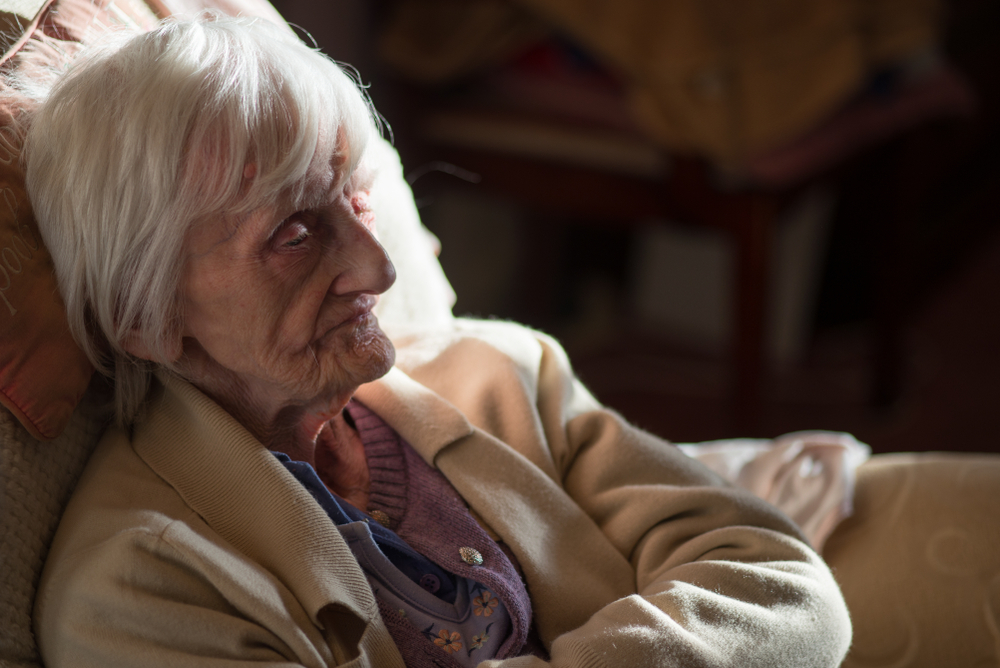Your cart is currently empty!
How a 101 Year Old Jeweler Stays Active Six Days a Week

Most people dream of slowing down someday. They imagine the hammock, the quiet mornings, the gentle pace of retirement. But in a small New Jersey shop, one woman is doing the opposite. At 101 years old, Ann Angeletti still wakes up early, gets dressed with purpose, and heads out the door to work six days a week. She greets her customers, repairs delicate pieces of jewelry, and shares stories from over a century of life. And according to her, stopping simply isn’t an option.
Ann has lived through wars, eras of invention, and a century of changing culture, but one thing has stayed constant for her. Work is not just something she does. It is part of who she is. That belief has shaped her life since childhood and has become her philosophy for longevity itself. Her routine, her values, and her unshakable work ethic have made her something of a local legend. But beyond her story is a larger question. What does it really mean to work, to age, and to build a life worth waking up for day after day?
This is the story of a 101 year old woman who refuses to retire, and the lessons we can learn from her remarkable journey.
A Life Shaped by Work From the Very Beginning
Ann’s connection to work began far earlier than most. Born in the early 1920s, she grew up during a time when survival often depended on family labor. Like many first generation families in Brooklyn, hers worked wherever they were needed. She left school before becoming a teenager in order to help run her family’s small grocery store. While other children were learning multiplication tables, Ann was learning how to greet customers, stock shelves, manage long hours, and keep a business thriving.
One of the most vivid images from her childhood is her father selling ice door to door from a horse drawn cart long before refrigerators were common. Those early memories shaped her resilience. Life was demanding, but it taught her that working hard and finding meaning in responsibility could carry a person through even the toughest decades.

Later in life, when her husband left to fight in World War II, Ann did not wait at home. She went to work at the Navy Yard, stepping into a role that connected her to a generation of women who kept the nation functioning while men were away at war. Afterward, she took on work as a waitress, always doing whatever was necessary to keep life moving forward.
Her approach to every chapter was the same. She simply took action. Whatever needed to be done, she did it.
The Serendipitous Start of Curiosity Jewelers

In 1964, Ann was driving through Cresskill, New Jersey, when she spotted a storefront for rent. The sign caught her eye, and without hesitation, she stopped the car, called the building owner, and asked for the price. The rent was only 85 dollars a month. That single moment of curiosity set her entire future in motion.
What started as a chance encounter became Curiosity Jewelers, a business that has now operated for more than six decades. She has run the shop with her daughter and granddaughter, making it a three generation family effort. The store is open five days a week, but Ann works on a sixth day as well, traveling to New York City’s Diamond District on 47th Street to meet suppliers, repair pieces, and keep her craft sharp.
Customers adore her not only for her skill but for her warmth. She often says she does not care if someone buys something. She is just happy when people come in to talk. To her, the shop is not merely a business. It is a space for connection.
That attitude has helped Curiosity Jewelers stand the test of time. Trends have changed. Technology has changed. The entire world has transformed. Yet Ann and her shop remain, still offering the kind of personal, human experience that has become rare.
Why Ann Believes Retirement Would Be The End

Ann has repeated one phrase across interviews, news clips, and conversations. If I retire, I would die. She does not say it with drama. She says it with plain certainty, as if she were stating her age or her address.
What she means is that stopping would remove the structure, purpose, and social energy that keeps her alive. For her, work is not a punishment or an obligation. It is the foundation of her days. It gives her something to wake up for. It keeps her mentally alert, physically active, and constantly interacting with people.
Studies support her instinct. Research going back to 1973 has suggested that early retirement may come with risks. Some studies have linked early retirement to higher rates of cognitive decline, cardiovascular issues, and overall worsening health. One study from 2016 reported that delaying retirement by even one year was associated with an 11 percent lower risk of mortality. The researchers suggested that staying engaged may delay the onset of physical or mental decline.
Of course, some studies contradict this, arguing that early retirement can improve cognition and reduce stress. But these scholars emphasize that the benefits depend on what retirement actually looks like. If someone leaves work but remains mentally stimulated, socially engaged, and physically active, they may thrive.
This is exactly what Ann embodies. Her routine does not just keep her moving. It keeps her connected.
The Six Simple Secrets She Lives By
Ann’s advice for long life is not groundbreaking. It is not a strict regimen, a complicated diet, or an intense fitness routine. Instead, her philosophy centers on simple, consistent self care. She says:
- Get up
- Shower
- Eat
- Take care of yourself
- Exercise
- If you do not like what you are doing, change
These steps might look small, but for Ann, they are foundational. They are reminders that caring for yourself physically helps your mind, your mood, and your longevity. Her lifestyle is a testament to the power of routine. By keeping her days structured, she maintains momentum.
Work is simply another part of her self care system. It gives her purpose, movement, and interaction. It keeps her young not through luxury or leisure but through action.
What Her Story Means in the Age of FIRE

The FIRE movement, which stands for Financial Independence Retire Early, has gained attention across the country. Many people dream of leaving the workforce at 40 or even earlier, hoping to travel, relax, or pursue personal passions.
Ann represents the opposite. She shows what it looks like to work far beyond the traditional retirement age, not out of financial desperation but out of genuine desire.
Her story raises meaningful questions about how society talks about work, aging, and fulfillment. Is the goal to stop working, or is the goal to create a life in which work itself feels rewarding? Are we aiming for rest, or are we aiming for purpose?
For Ann, the answer is clear. Purpose wins.
Of course, her path is not for everyone. Retirement can be healthy, enjoyable, and well deserved. But her perspective offers an alternative view. Instead of asking how to leave work as soon as possible, maybe the better question is how to build a life where the work you do remains worth doing.
The Financial Side of the Conversation

Ann’s story shines a light on the emotional and physical benefits of extended work, but there is a financial dimension too. Experts warn that people who retire early may face unique challenges. Leaving work before qualifying for Medicare means absorbing health insurance costs independently. Inflation, investment volatility, and unexpected expenses can also erode savings faster than planned.
Financial planners consistently emphasize that the most important element of retirement is having a realistic budget. Without a clear sense of spending, even the most dedicated savers can find themselves overwhelmed.
Traditional financial advice includes creating a withdrawal strategy, planning for lifestyle changes, and considering whether downsizing can help stretch resources. These principles stand whether someone retires early or decades later.
Ann herself does not center her life around finances. She works because she loves it and because it gives her purpose. But her story sits at an intersection of lifestyle and financial planning. It reminds us that the decision of when to retire is both practical and deeply personal.
Aging in America and the Rise of Centenarians

Ann is part of a fast growing group. The number of centenarians in the United States has risen sharply over recent decades. In Hawaii, for example, there are 44.4 centenarians for every 100000 residents, the highest in the country. New Jersey, where Ann lives, has more than 2600 residents who are 100 or older.
Globally, the trend is similar. Japan recently recorded its fifty fifth consecutive year of increasing centenarian population, reaching nearly 100000 people 100 or older. The vast majority are women, a pattern seen worldwide.
These statistics raise questions about how societies support aging populations. Researchers at Northeastern University found that 70 percent of older adults in high aging communities do not have adequate services. As people live longer, the need for accessible healthcare, mobility support, and social structures becomes more urgent.
Ann’s story exists inside this broader context. Even as services may be lacking for many seniors, she has found her own ecosystem through work. Her jewelry store provides movement, interaction, and routine, all of which support her well being.
A Daily Routine That Sustains Her Spirit
Every day, Ann wakes up with the same predictability she has followed for decades. She gets dressed, cares for herself, and heads to the shop. There, she chats with customers, repairs chains, organizes displays, and maintains equipment. She makes the commute to New York on her sixth workday each week, moving through the Diamond District with confidence.
Her routine keeps her mentally sharp. Jewelry work requires precision, attention to detail, and steady hands. These tasks engage her mind in ways that promote cognitive health.
But beyond the technical aspects, her days are filled with social contact. People stop by the shop not only to make purchases but to share stories, drink coffee, or simply enjoy her presence. The shop becomes a community hub.
For Ann, this human connection is a form of fuel. It gives her energy. It gives her meaning.

Lessons To Learn From Ann’s Century of Living
Ann’s life is rich with lessons about resilience, purpose, and mindset. Some of the most powerful takeaways include:
- Purpose can be more powerful than rest. Having something to look forward to each day can sustain mental and physical health.
- Simplicity often holds the greatest wisdom. Her habits are basic, but they are consistent and intentional.
- Connection matters. Social interaction can lengthen lives, improve mood, and support mental clarity.
- Work can be more than labor. For some, it becomes a source of identity and joy.
- Change is always possible. She encourages people to leave situations that drain them and find something meaningful instead.
These principles apply regardless of age. Whether someone is 21 or 101, the foundations of a fulfilling life remain similar.
A Reminder That Life Is Built One Day at a Time
Ann Angeletti is not just a 101 year old woman who works six days a week. She is a reminder that purpose is timeless and that passion can outlast the years. Her life challenges assumptions about aging and shows that activity, connection, and consistency can keep the human spirit remarkably young.
Her story invites readers to reflect on their own routines and choices. What gives you purpose? What keeps you moving? What brings you joy? These questions shape not only how long we live but how fully we live.
Ann’s days are not defined by age but by intention. She wakes up, gets ready, and steps into a world she loves. And maybe that is the real secret. Not avoiding age, but filling the days we have with something that makes them worth waking up for.
